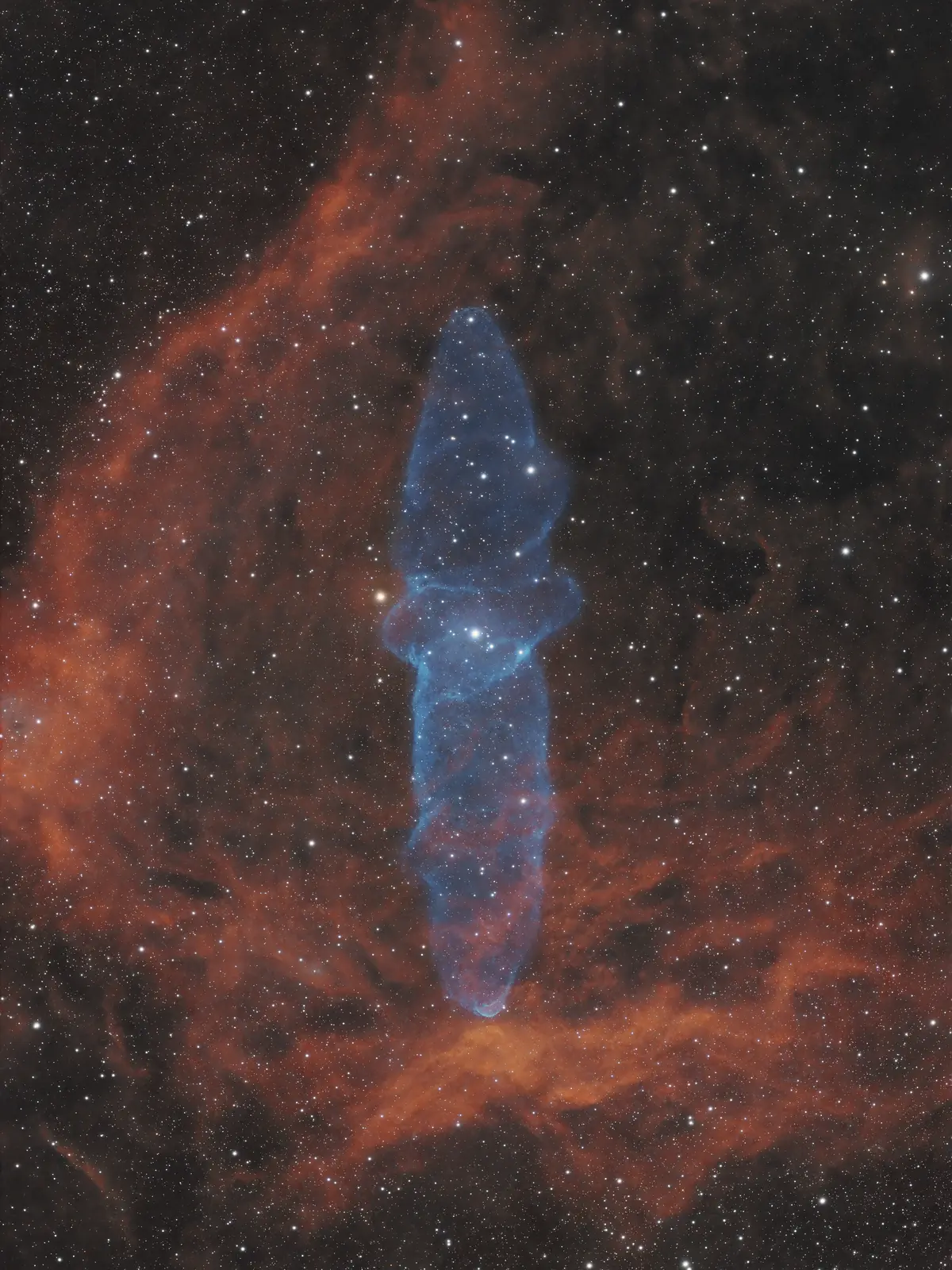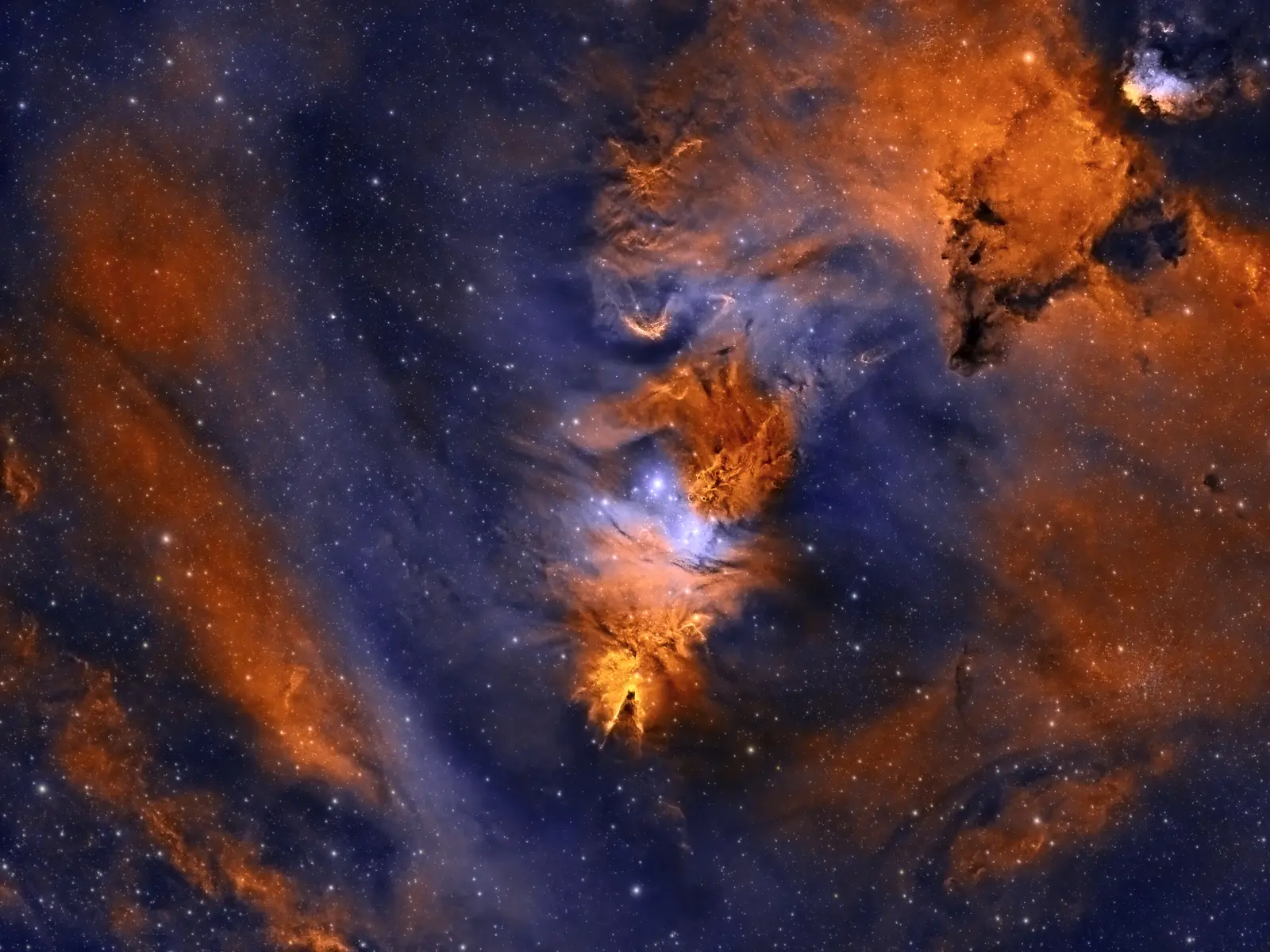I’m an astrophotographer living on the edge of the Norfolk Broads in the UK with a keen interest in all things space and cosmos. Like many of you, I’ve put a big chunk of my life into this ridiculous, rewarding pastime. I’m pretty sure I’m not alone in having a touch of astro-image OCD, so “finishing” an image is… optimistic. Nevertheless, I recently submitted one of my “completed” images to a competition — and to my surprise, it won. My Cone Nebula image will be included as a desktop wallpaper in Kubuntu 24.04 LTS. Anyone who downloads and installs Kubuntu will see an example of what our community can achieve with humble kit.
My offering isn’t the absolute best our community can produce, but it’ll be seen by a lot of people worldwide, which is humbling. We can all admit that, despite our aperture and camera envy, NASA’s images are astounding — but they’re ubiquitous online and tend to be all the public sees. I think what appealed to the judges here was that this isn’t an image they’ve seen before and it was created by a “little guy” using an operating system that rivals the big players, Microsoft and Apple.
I use Linux — specifically Kubuntu — for everything “astro” and as my daily-driver PC. Once you set up a few things (honestly less faff than a fresh Windows install), it just works without the hassles people expect from Linux. It’s intuitive coming from Windows, and the everyday software is basically the same. For transparency: after the competition I was asked to join the Kubuntu media team — but you won’t get corporate blurb from me. This is my legit experience. I don’t get paid to talk about Kubuntu, and we’re hardly a big organisation — just a small group of like-minded people with a similar ethos. If you take two things from this: first, I’m not a fan of how corporate giants (and governments) squeeze the little guys; second, Kubuntu is a genuine alternative you can use for everything — including astrophotography — and it’s free.
Can Linux really cover all our astrophotography needs?
As the little success story above suggests… I think so. Could your capture/processing workflow benefit from switching? It might actually get simpler.
Kubuntu 24.04 is a brilliant OS, and you should seriously consider it for astrophotography. I’m not the corporate type to gush features, but here’s why it works. My system is ageing and Kubuntu takes everything I throw at it. I doubt I’ll use another OS again. You can make it look and behave how you want (themes galore), and there’s almost always an alternative piece of software — free. Great dark themes help keep your eyes somewhat adjusted, and there’s a night mode like Windows. But you don’t care about that — you care about the astro functionality.
Software choice on Linux is admittedly narrower, but that’s a positive in my book. You don’t need loads of options; you need two things dialled in. Learn KStars/Ekos and the INDI protocol for capture and you won’t need anything else for imaging runs. Polar alignment, go-to and plate solving, focusing, guiding, imaging sequences, scheduling, mosaic planning, observatory control — the lot.
KStars is the planetarium and planning tool — catalogues, colour schemes, target selection — fully featured. Ekos is the capture/equipment control layer. It can be a bit flaky on Windows, but under Kubuntu it integrates beautifully. There’s outstanding support from the maintainer and an active forum. I had an error with my Pegasus Astro UPB and it was fixed a day later.
Your imaging kit is essentially plug-and-play. You’ll still assign COM-style ports for serial devices (EQMOD, UPBs, SQMs etc.) just like on Windows, but you won’t spend hours installing drivers and random utilities. Everything for a session lives in one application. Installation is straightforward with clear instructions on the INDI Project site. There is a learning curve — but that’s true of every bit of software in this hobby.
Even if you don’t switch to Linux… seriously consider INDI.
I used Windows and ASCOM for years and, honestly, it was often a chore: cameras dropping out, mount disconnects, resets/reboots, sluggish downloads. When it worked, great — but we all know things go wrong. Stability is a must for astrophotographers. There’s nothing worse than the PC melting down mid-run, in winter, at 3 a.m., just as the caffeine wears off.
Apart from “user-created error,” I rarely have to reboot any of my Kubuntu machines and redo a whole setup — only to discover clouds rolled in. Switching to a Raspberry Pi at the mount with Linux/INDI made life ridiculously easy. If you’re new or you haven’t made that jump, you should. Long USB runs hate the cold; if you haven’t got a mini-PC/Raspberry Pi on the rig, life gets “interesting” for exactly those reasons.
My Raspberry Pi and UPB live on a Losmandy plate on top of the scope with everything connected. Short, tidy cables; if I want to swap setups or do maintenance, I unplug two cables, loosen the saddle, and lift the whole assembly off in one piece. No unplugging eight leads and re-mapping ports. I run one power cable and one Ethernet to the mount, and one power from the hub to the mount. Easy management, fewer snags. EQMOD is Bluetooth too, so I could go Wi-Fi from the Pi and reduce the cable hazard even more.

The INDI/Ekos/Kubuntu combo has been rock-solid. Over the last year it let me capture enough data to finally get the Squid Nebula you see here. All my images are captured with a 70 mm Altair Quad and a cooled ASI1600.
Processing took a while, but thankfully PixInsight runs on Linux with no performance loss — I believe it’s developed on Kubuntu. If you’re at Pleiades Astro and ever read this: thanks for the best tool in the business — it helped me win. I love that a PixInsight-processed image will be a default desktop wallpaper on the OS the software’s built on — a neat little loop. If you’re not using PixInsight yet, save up. It’s cross-platform, so if you’re on Windows now and move to Kubuntu later, you’re covered (and in my opinion it runs better there).
I also run an all-sky camera on a Raspberry Pi — unsurprising given the best all-sky software is Linux-based. The one I use is written and maintained by one guy who’s contactable and helpful. The open-source community is proud of their work and quick to fix issues. In my experience, that’s better support than big-tech.
With privacy concerns rising, more manufacturers are noticing open-source uptake and offering Linux builds — ZWO and Altair, for example. I know SharpCap isn’t coming to Linux, and it’s one Windows tool I do miss (I’d still happily pay for it). If there isn’t native software for a device, it will likely work via INDI/Ekos anyway. Kubuntu is essentially plug-and-play as above. Planetary isn’t perfect, but if you’ve got a ZWO or Altair camera you’ll be fine with their native Linux tools.
If your ageing PC is stuck on Windows 10 and won’t make the jump to 11, you’ve got a problem when Windows 10 support ends. I’d suggest giving Kubuntu 24.04 a try — especially if you’re an imager and want stability. Linux isn’t the scary beast people make it out to be. It can be a simple daily driver, and it’s very effective for astrophotography — as you can see. When your Windows box eventually says “Computer says no,” consider Kubuntu for all the reasons above (and plenty more).
